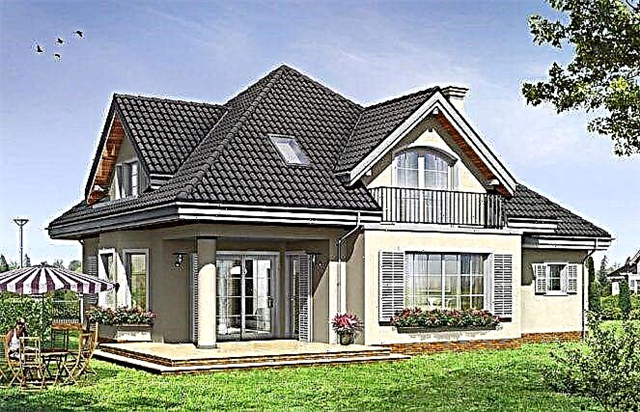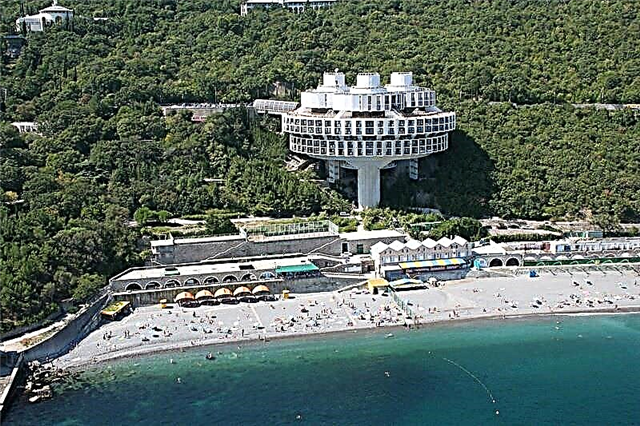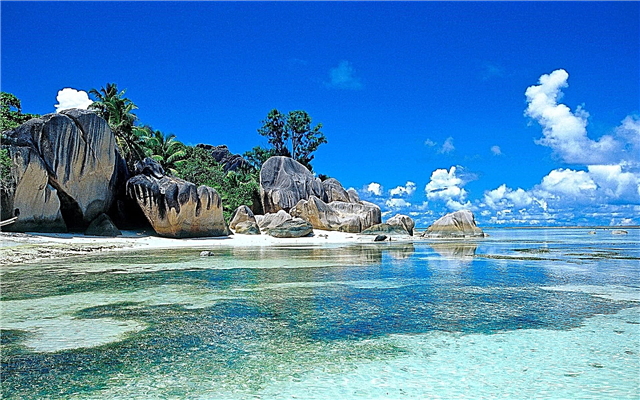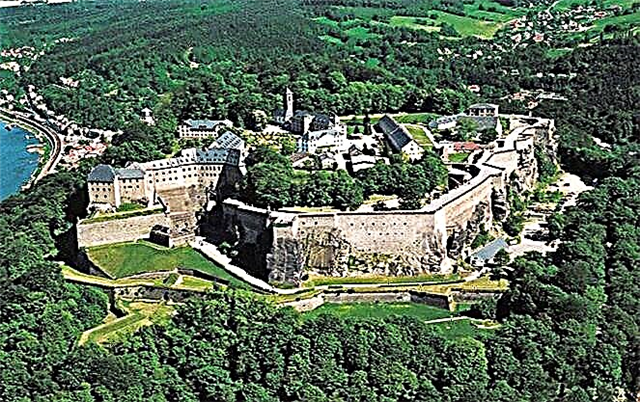Saxon Switzerland and the Königstein Fortress are a protected area near Dresden that attracts millions of visitors every year. Unique flora and fauna, many hiking trails delight nature lovers with their beauty, and the bizarre landscape created by nature itself, impregnable fortresses and castles, luxurious parks and palaces cause genuine admiration among travelers from all over the world. This national park is rightfully considered one of the best not only in Germany, but throughout the world.
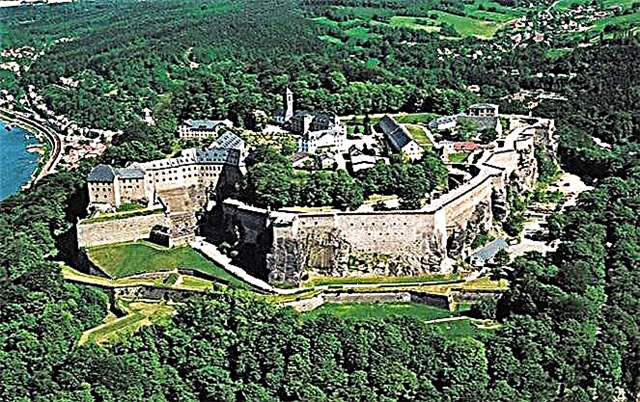
Saxon Switzerland National Park in Brief
The Saxon Switzerland National Park is located 125 km from Prague and 30 km from Dresden at an altitude of 556 m above sea level and covers an area of 93 square kilometers. It is a mountainous area with about 1000 elevations.
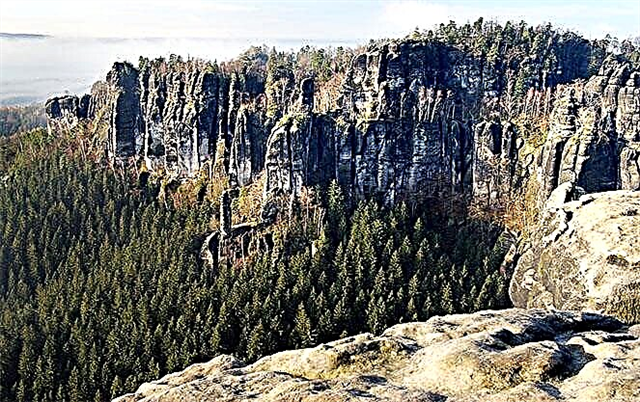
The highest point in the park is the Grosse Winterberg (Big Winter Mountain) - its height is 723 meters.
This landscape reserve can be confidently called one of the most beautiful places in Germany. Its special charm is given by the bizarre cliffs overgrown with forests, and a number of amazing natural and historical sights.
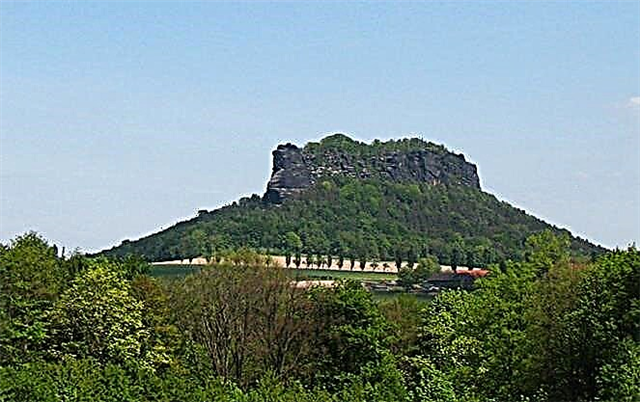
The geographical name of this area is the Elbe Sandstone Mountains. In the place of the mountain range, the sea once splashed, and the mountain peaks were at its bottom. After the Cretaceous, the sea retreated and exposed cliffs with an unusual landscape, narrow valleys and gloomy gorges.
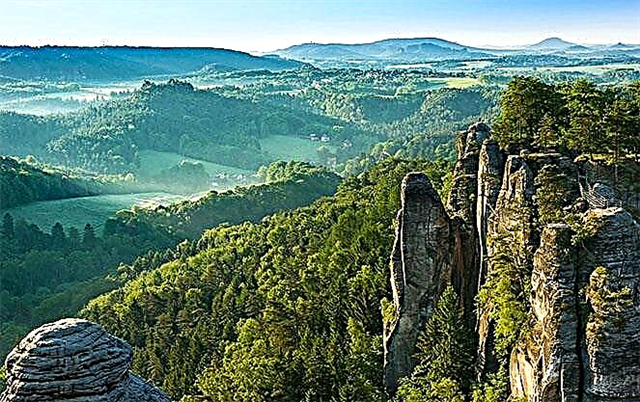
However, this territory was declared a protected area only in 1956 in order to protect nature and unique attractions due to the huge influx of travelers. At the same time, access to certain territories was prohibited or restricted.
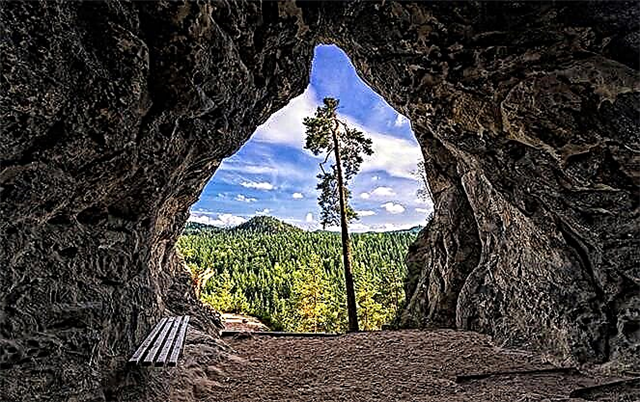
There are areas that are closed to the public at the present time - they are indicated on the map with red shading. You can view the map at the entrance to the reserve.
Main attractions
“Saxon Switzerland” is one of the most visited places not only in Germany, but also in Europe in general. Many tourists come here solely to see the famous Bastei mountain range, towering 194 meters above the Elbe, a deep 40-meter gorge between the rocks and the equally famous Bastei bridge thrown across it, which is the symbol of Saxon Switzerland.
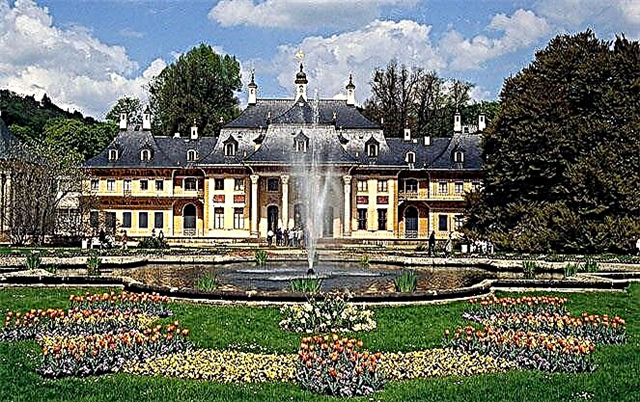
Another attraction runs through the mountain range - the "Artists' Trail" or Malerweg. All the most important sights of the National Park are located along this 112-kilometer trail.
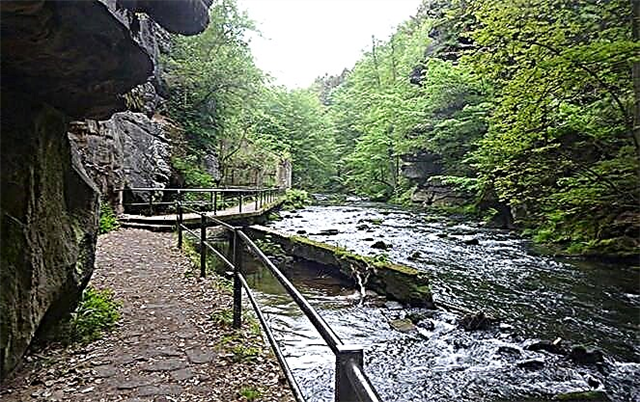
Kushtal is a rocky gate in the Elbe Mountains, striking in its size: their height is more than 10 m, width is more than 16 m, depth is about 25 m. The opening in the rocks is formed by the Elbe current. Lifting your head up, a little higher than Kushtal, you will see the ruins of a medieval fortress. To get a better look at them, it is enough to climb the steep stairs, carved in a narrow rocky "corridor".


Another attraction is the Lichtenhain Falls. This is a place that tourists fell in love with back in the distant 1830. It is to him that the "Trail of Artists" leads. In the beginning it was a small rocky stream, which one of the local residents turned into a beautiful waterfall by building a small dam. True, the water from the rocks did not fall constantly, but only at the request of the guests - for a fee. However, the spectacle of jets and rainbow splashes was very effective.
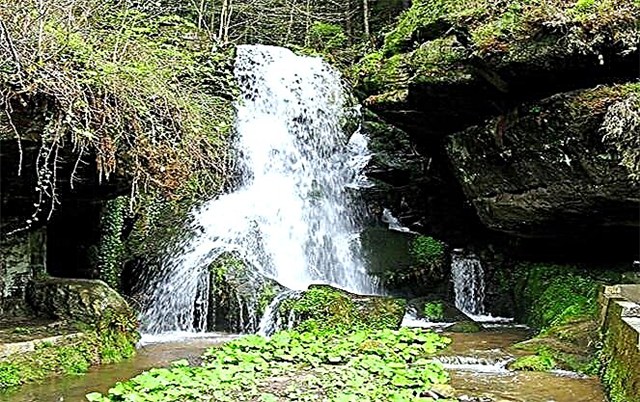
Nowadays, the waterfall works on schedule and is completely free. A number of hiking trails lead from it and to it.
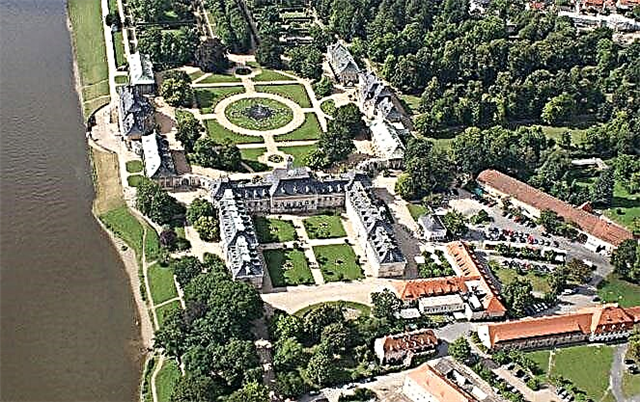
In addition to natural attractions, the park contains many historical monuments, in particular about 2,000 castles. That only is the Pillnitz Palace, which consists of three buildings: the Water Palace, the Nagorny Palace and the New Palace.
In the past, it was the suburban residence of the Saxon monarchs. Today the restored palace is on the UNESCO World Heritage List.
Active rest in the park
The Saxon Switzerland National Park is a real playground for climbers. There are about 1,100 peaks open for rock climbing. However, in order to preserve the fragile sandstone rocks from destruction, special rules have been developed for those who like to climb the mountains.
For example, ropes and rings are only allowed to be used for belaying, not to move forward, and many aids are generally prohibited. Therefore, do not climb too high, especially for beginners.
There are also many cycling routes here. The sights mentioned above can not only be bypassed on foot, but also by two-wheeled vehicles. Even for people with disabilities, all conditions have been created in order to comfortably spend time in one of the most beautiful places in the world.
Königstein fortress and its attractions
The Königstein Fortress (Festung Königstien) is another must-see attraction. It is located on the mountain of the same name on the left bank of the Elbe, 15 kilometers from the city of Pirna and 30 kilometers from Dresden.

Towering over the Elbe at 240 meters (361 m above sea level), the fortress covers an area of about 9.5 hectares, the height of its walls ranges from 36 to 42 m.For centuries, the medieval fortress served as a refuge for the Saxon kings, as well as a repository of their wealth, including and the state treasury.
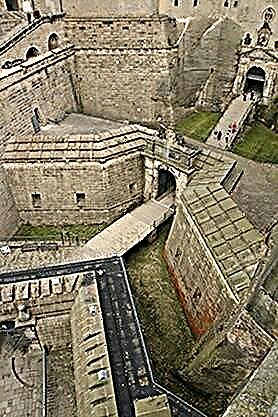
On the territory of the fortress you can see many interesting things, for example, the famous Garnisonkirche - Garnison Church of St. Martin. This Romanesque castle chapel, erected in 1676, became the first garrison church in Saxony. Today it is open to parishioners and pilgrims. Services and weddings are held here.


No less interesting is the old armory, which preserves the history of Saxon weaponry and military affairs.
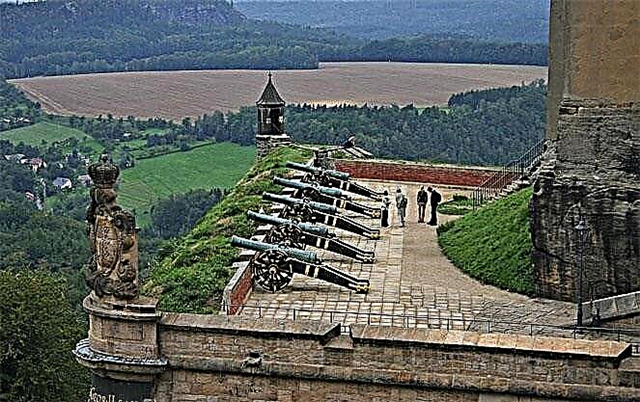
Be sure to visit the Neues Grunes Gewolbe Treasury Museum, which, like a real casket, houses the jewelry collections of the Saxon electors and kings.
The architecture and interior decoration of the museum are also impressive.
You should also see Georgenburg - the Imperial Castle, originally called the Kaiserburg, which eventually began to be used as a prison, as well as Magdalenenburg - Magdalene Castle, which is a huge storage for wine and other provisions. It was here that the "bottomless" barrel of wine of Augustus the Strong himself was kept.
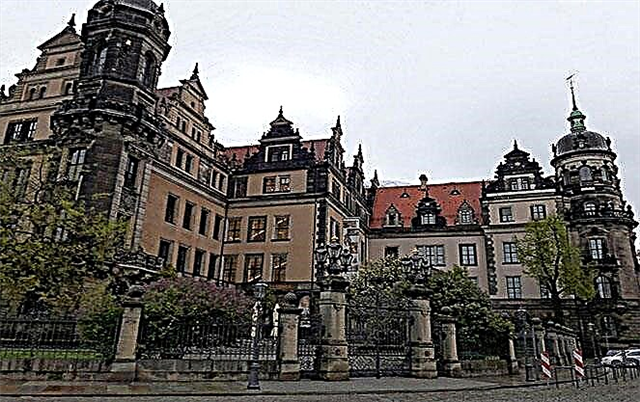
Tourists are especially attracted by the Friedrichsburg pavilion, where a real miracle of technology is located - a unique banquet table, which, with the help of a special mechanism, rises into the festive hall from the kitchen located on the floor below.
History and significance of the Königstein fortress
The first mention of the fortress dates back to 1233. At that time, she was on the territory of Bohemia. The fortress was erected on a huge flat rock in order to protect the city.
The only entrance to its territory consists of a chain of portals, bridges and tunnels. Behind them is a whole settlement, consisting of several dozen buildings, separated by streets and squares. The buildings were built at different times, so their architectural styles differ and at the same time harmonize.
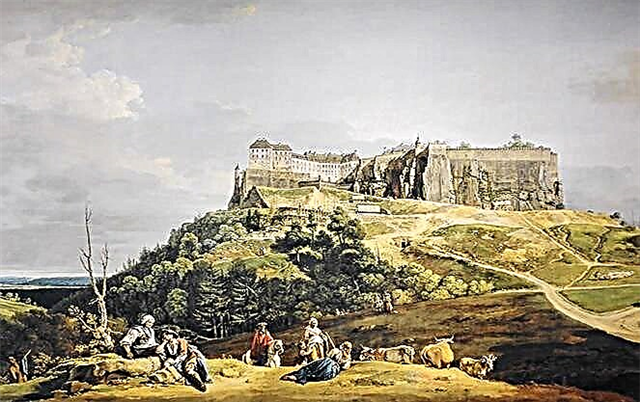
Königstein translates from German as "King's Stone", which speaks volumes, in particular, about the meaning of the building. The fortress, located at the top of a powerful rock mass with almost steep slopes and protected by thick walls, seems absolutely impregnable. It is no coincidence that during its long history it has never been attacked.
It is known from historical sources that as a result of countless military disagreements, Königstein finally passed into the possession of Saxony in 1459.In the 16th century, Duke George the Bearded attempted to turn the fortress into a Celestine monastery. However, in 1524 the monastery ceased to exist due to the fact that Saxony became Protestant.
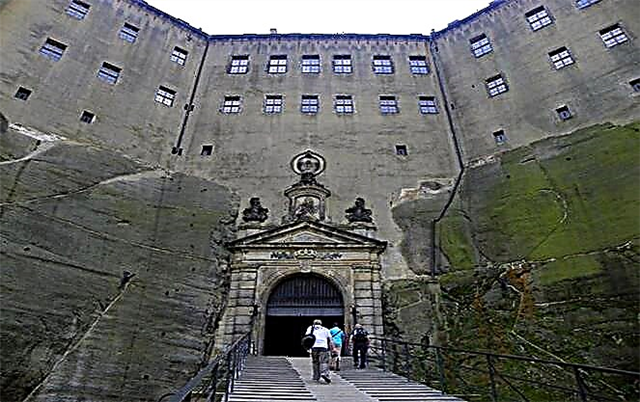
Throughout its history, the fortress has been rebuilt and completed several times. During the two world wars, the citadel served as a prison for prisoners of war.
In the last days of World War II, when the outcome was predetermined, the commandant of the fortress surrendered it to Soviet soldiers without a fight.
In 1955, Königstein was recognized as a cultural and historical monument, and a museum was organized on its territory.
The fortress from the inside or what is within the walls of the citadel
The seemingly impregnable fortress is open to tourists. There is something to see behind its walls. Now there are about 50 different buildings here: a garrison church, a treasury, barracks, military fortifications, armories, stores for gunpowder and various values, wine cellars and more. Once upon a time, it also had its own hospital and even a casino for officers.
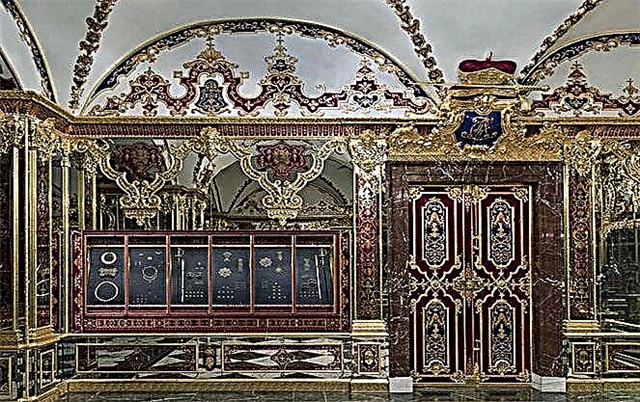
Inside, the area of the fortress is such that it could fit 13 football fields.
Magic well and ground pavilion
Another of the most visited attractions on the territory of the fortress is the Well House (Brunnenhaus) with a deep well that still functions today. Its dimensions are 152.5 m deep and 3.5 m wide. Thanks to this, he gained fame as the deepest well in Europe. For at least 400 years, the well served as the only source of water supply for the fortress. You can see him in the photo.

It is known that the Russian Tsar Peter I himself, who once visited Saxony, personally estimated the depth of the well with the help of a rope.
A baroque pavilion was erected next to the well. Laconic and luxurious at the same time, in ancient times it served as a kind of hotel for visitors.
Legends and secrets of the fortress
Königstein keeps many secrets and legends that force tourists to take a pilgrimage to the citadel not only to admire it. For example, one of them says that the water in a wonderful well has healing properties.
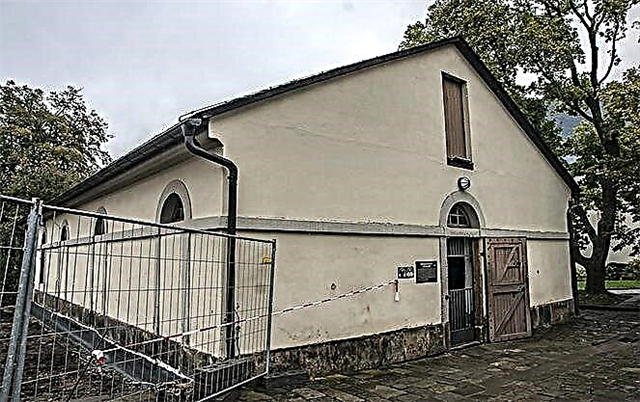
Another popular legend tells of a bottomless wine barrel, from which Peter I himself tasted. In fact, we are talking about a huge barrel that can hold 250 thousand liters of a drunken drink. You can see her in one of the citadel's tunnels.
In addition, you will definitely be told the legend about the treasure of gold coins, about the grass that grows only on the territory of the fortress and has magical powers - you can make a love drink from it, as well as the tower of hunger, the room of lazy people, the bear's hole, etc.
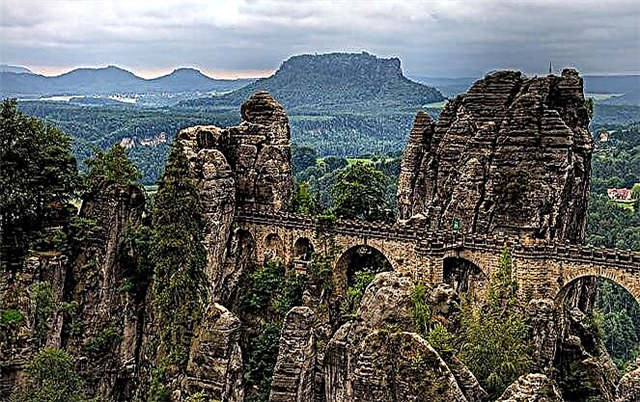
Well, what is a castle without ghosts? Here, too, they believe that ghosts live in the casemates.
And also, according to legend, there is a secret bunker on the territory of the fortress, but no one knows where it is located (however, that is why it is secret).
Where is the fortress located and how to get to it

The fortress is located near the capital of Saxony - the city of Dresden. You can get to the citadel by all types of land and water transport:
- bus: Pirna - Königstein (stop Abzweig Festung or Thürmsdorf / Vogelstein). Approximate cost - 5 euros;
- railway: train Dresden - Königstein - Schön or single-track, the carriages of which leave the town of Bad Schandau;
- car: rented car on the Dresden - Pirna route in the direction of Bad Schandau;
- paddle steamer Dresden - Königstein - Bad Schandau.
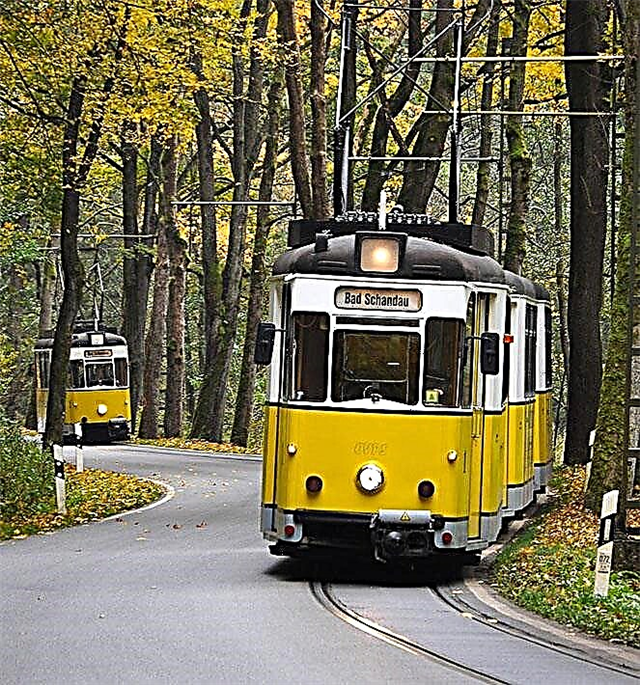
Whichever mode of transport you use, the path will be full of vivid impressions that will forever remain in your memory.
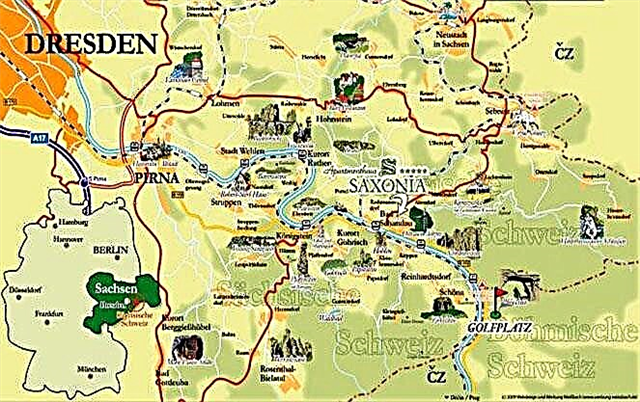
All the most important things about visiting the fortress
A visit to the fortress will be comfortable for all visitors, including those with disabilities (there are elevators).
Opening hours of the attraction: the territory is open to the public from March 24 to October inclusive from 9.00 to 18.00; from November to March 23 - from 9.00 to 17.00.
Please note that the last visitors are allowed in no later than an hour before the closing of the fortress. The only day off is December 24th.
And December 31 is a short day, the fortress closes at 15.30.
Information about the cost, opening hours, as well as the rules for visiting the fortress is regularly updated on the official website.
Finally
Saxon Switzerland and the Königstein Fortress are a truly unique area, where sights await you literally at every turn. Often these places are called the "stone sea": for tens of kilometers there are bizarre rocks, as if carved by a skillful giant stone-cutter from sandstone and basalt, the calm Elbe River, the landscape of amazing beauty.
Thanks to the developed infrastructure, the availability of different types of transport, which will take you directly to the gates of this unique place, anyone will have the opportunity to see these fantastic creations of nature and man.


